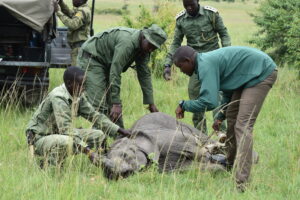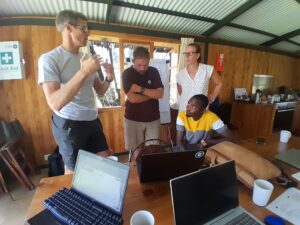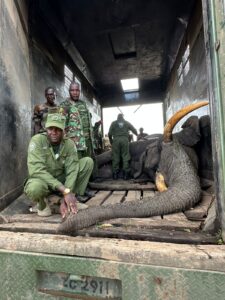Human-Wildlife Conflict (HWC) is a broad term used to describe the many different negative interactions experienced by both people and wildlife as a result of living in proximity to one another. For elephants in the Masai Mara Kenya, conflict usually manifests as crop-raiding and infrastructure damage and, in extreme cases, also includes human threat, injury and death. Human-Elephant Conflict (HEC) poses a significant challenge to conservation and is a problem we believe will get worse as we see human population and agricultural expansion along the human-wildlife interface. Elephants are known to enjoy maize, sorghum, and other crops. They can also cause damage when they enter settlement areas, which can occur when they get caught in fencing or during migratory movements. Expanding agriculture in the ecosystem is thought to be driving conflict levels higher. Since 2016, MEP has recorded a 268% increase in crop damage incidents by elephants (45 in 2016, 121 in 2019). Overall, conflict rose from 84 total events in 2016 to 181 in 2019. In the same time period, elephant deaths from conflict have outpaced those from poaching.
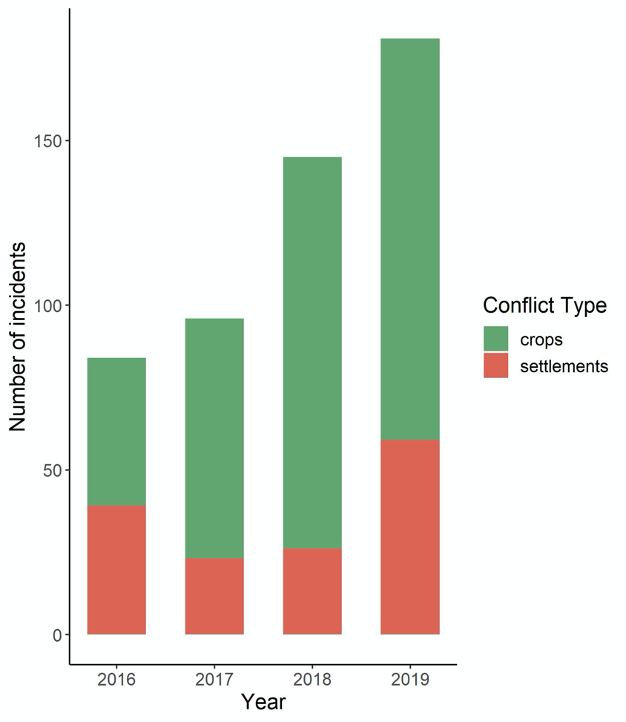
The number of conflict incidents recorded by MEP rangers across the Greater Mara Ecosystem from 2016 – 2019.
Controlling conflict is difficult as elephants are very smart and use different tactics to raid crops while avoiding mitigations from farmers and wildlife rangers. In this animation we see that three collared elephants (Ivy, Fred, and Kegol) all wait until night to raid crops, so they are difficult to detect. They are so quiet that even Ivy and her family group of nine are almost impossible to find at night. Elephants have also been observed using staging areas to raid. These forest patches provide safe refuge for resting during the day, while allowing them to stay close to crops. From the animation, we see them using two small patches that are located less than 2 km from the farms.
Individual elephants also appear to have different proclivities for raiding. While some like Ivy are “cropaholics”, others will only raid occasionally or not at all. Discovering why some elephants crop raid and others do not is one of the questions the Mara Elephant Project Research Department is asking. Collecting long-term data on these behaviors will help inform how MEP, the Kenya Wildlife Service (KWS) and other organizations can respond to conflict in both the short term with mitigations, and the long-term with landscape planning.
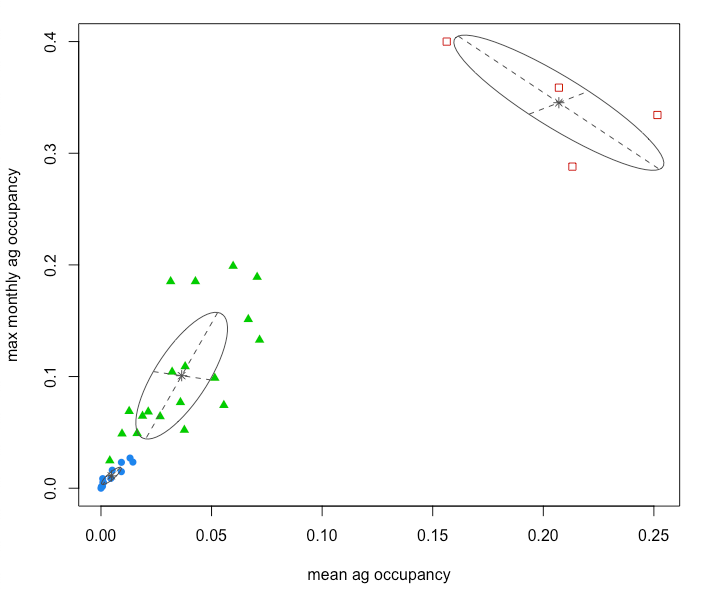
The data show that Mara elephants fall into three categories: ‘cropaholics’ (red squares), seasonal/occasional raiders (green triangles), and teetotalers (blue dots).
In the short term, MEP works alongside farmers to mitigate conflicts as they occur with our boots on the ground ranger units and in partnership with the Kenya Wildlife Service (KWS). MEP deploys ranger teams to high human-elephant conflict areas, and they are tasked with preventing crop raids and moving elephants out of farms using vehicles, bright lights and flashbangs. If those methods don’t work, then the Karen Blixen Camp Trust helicopter is called in to push elephants out.
In the long-term, MEP is conducting research to inform more sustainable responses. MEP is working with the KWS and Colorado State University to assess the current conflict mitigation toolkit, and test and develop new tools. These include low-cost chili balls that can be thrown to create a noxious cloud of chili powder when elephants are crop raiding. We are also using elephant tracking data in partnership with KWS to characterize elephant behavior in relation to crop raiding. This includes studying staging behavior by elephants, looking at how the layout of the natural and agricultural landscape may exacerbate or reduce conflict, and the use of buffer crops that are unpalatable to elephants.

A landcover map being developed by MEP and researchers from Colorado State and University of California Davis. The map is based on satellite imagery and can detect different habitat types and where crops are planted. This will help map expanding agriculture and investigate how elephants are responding to that.
MEP is also conducting fence line mapping in the field using two Kibo motorbikes and dedicated spatial data research field assistants Amos and David. The motorbikes allow them to move around quickly while using the Njia app to fill in the map with new fence lines and roads. Mapping fence proliferation across the Mara is crucial to understanding how the landscape is changing and if elephants are moving around the fences or through them.
 The fence mapping motorbike with research field assistant Amos.
The fence mapping motorbike with research field assistant Amos.
MEP’s research into the short and long-term solutions to crop raiding is critical in protecting the Mara’s elephants and communities and we need more resources to continue this important work.
